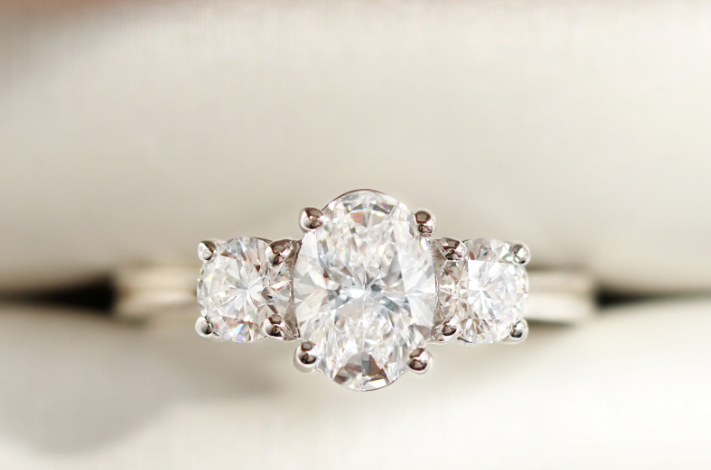A Dreamy Proposal: Natural Vs Lab-Grown Diamond Engagement Rings

The special moment when you get down on your knees takes hours of planning so that it is memorable for life. Lab grown diamonds engagement ring are perfect for such a meticulously planned occasion. Your girl will be over the moon to receive the shining symbol of commitment. The debate about natural vs lab-grown engagement rings is complex and multi-dimensional. Let’s explore whether Organic or Lab-grown diamond engagement rings are ideal for the most important day of your life.
The Origin
The invaluable diamonds for lab-grown diamond rings are created in a controlled laboratory environment by recreating the process of natural diamonds. This controlled environment significantly shortens the process from a few billion years to a few weeks, resulting in a sustainable yet beautiful piece of jewellery. The two methods are used to create diamonds for lab-grown diamond rings namely CVD (Chemical Vapour Deposition) and HPHT (High-pressure, High Temperature).
In what ways are Lab-grown diamond engagement rings and organic ones similar?
Other than their origin, mined and lab-grown diamonds are almost identical in their cut, size, shape, hardness, and looks. It is difficult for even an experienced jeweller to visually differentiate between the two brilliantly shining gems. A perfectly cut, flawless diamond is difficult to find regardless of origin.
Differences between Natural and Lab-grown diamonds
The following factors need to be considered for an informed decision.
Colour
Lab grown diamond rings can be crafted with White, Yellow, Pink, Purple, Red, Blue, Green, Orange, Black, And Brown coloured diamonds. They are usually available in colour ranges from D to K grades.
Natural diamonds, however, can be found in every imaginable colour and hue as different molecules of impurities trapped in the carbon bring out varied saturation levels and colours.
Grading
Diamond is graded based on its clarity. Natural and lab-grown diamonds both incorporate properties that affect their clarity. Lab-grown diamonds have metal traces as they are formed in a metal solution. Though these are not visible to the naked eye, upon magnification they can be identified.
Natural diamonds have formed under earthen pressure for billions of years, due to different kinds of elements and volcanic eruptions that shape them and force them to the surface, they include substances like crystals, pinpoints, feathers, etc.
Gems Testing Laboratory of Great Britain (GEM A) and the Gemological Institute of America grade diamonds according to the visibility of these incorporations. Both Organic and lab-grown diamonds are chemically the same, so both are graded before diamonds are fitted into your engagement ring. Although the reports of both types of diamonds are different.
Price
The diamond prices are ascertained with 4C’s i.e. Clarity, Colour, Cut, and Carat. Nevertheless, diamonds are generally 30 to 50% less in price in comparison to organic ones of the same size and quality. The increasing carat weight and uniqueness of colour lead to increased differences in prices. This means that for the same price, you can buy a bigger lab-grown diamond.
The Organic diamond rings do not devalue over time and their price reflects their rarity, the time required for their formation, and the difficulty of the mining process. However, lab-grown diamond rings are rather new, and their resale value is uncertain at this time. Besides that is the last thing people have in mind while purchasing an engagement ring they hope will last for life.
Which One to Choose From?
Diamond engagement rings are a symbol of love and commitment between two people as a resolution to marry soon. All the romantic arrangements for the proposal are centred upon the ring which is carefully chosen. Diamonds are a girl’s best friend so diamond rings are automatically the choice. Natural diamonds were traditionally used but lab-grown diamond engagement rings have increased in popularity in recent years with celebrities like Rooney Mara receiving one and Meghan Markle incorporating two lab-grown diamonds in her engagement ring alongside organic diamonds. Emma Watson and Miley Cyrus also proudly sport their lab-grown diamond rings. The shift is most likely because people are now preferring environment-friendly and sustainable pieces.
Both natural and lab-grown diamonds are one-of-a-kind jewels and offer the same brilliance and sparkle. The choice of an organic or lab-grown diamond engagement ring is a matter of personal preference and beliefs.
See Also: Tacko sfm mega.nz fixed version




